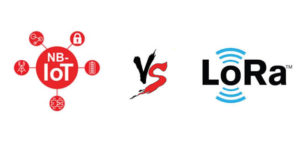
In agriculture, most of people understand IoT as some measurement tools that send data to web site. For example a personal weather station measures temperature, humidity, wind, soil moisture and sends all these data to a web server. Different applications running on the web server help farmer to optimize the use of resources and improve crop quality. Connecting sensor to data logger is relatively easy and well known, while Internet communication poses many challenges not found in other areas.
(1) GPRS time (It’s over, my friend)
First IoT data loggers for agriculture have been implemented in early 2000th when GPRS modems appeared on the market. Create a data logger, connect some sensors, connect GPRS modem and you are good to go. Since that many devices have been developed. GPRS coverage has been provided in the most of places of the world and it seemed perfect solution. Yet this solution had 2 main disadvantages. First, it was expensive. Price of GPRS modems has bounced around 20 dollars. GSM contract adds running cost about 5-10 dollars per month plus handling cost. Due to high power consumption of the modem, devices required solar panel and expensive rechargeable battery. Final price of such weather station without sensors was above 500 US dollars. This isn’t acceptable by most of the farmers of the world. As a result, very small part of agricultural market has been covered. Some specialists estimate 10%. I think it is even less considering developing countries. The second problem is availability of GPRS (2G) communication. Since 4G/LTE dominated GSM communication, GPRS has been kept supported only for the backwards compatibility with old IoT devices. Many providers have already switched off or limited GPRS service and will remove it completely within next 2 years. To make it more problematic, production of GPRS modems has been discontinued. What about 4G? Technically it is possible to use 4G modems for digital agriculture. But price overhead would be even higher than GPRS. 4G is adjusted for high speed and high volume of data transfer, not for low cost. Weather stations require very little data transfer and does not need power of 4G. Does it mean that IoT for agriculture is dead? Yes and no. Old approach is dead. We cannot use current GSM services for new development.
(2) Emerging of LPWAN
Lower Power Wide Area Network is a GSM alternative for low cost sensor network. Low Power means that devices require very little energy for communication and can use very low cost hardware. Wide Area means that devices can communicate over long distance. Imagine that sensors can send data over 10-15 km. Then imagine that there is one router per 10 km that can receive data from sensors and forward to the Internet. Such network is very similar to WiFi but with very long communication distance. Every sensor is virtually connected to internet without GSM power, without SIM card, without expensive hardware! This is the perfect world of IoT for agriculture. There are 2 most known LPWAN implementations. LoRa and SigFox. SigFox relies on its own infrastructure, of servers, very much like GSM. This is not interesting for us because we want to be totally independent and deploy our own LPWAN wherever we want. LoRa is exactly what we need. LoRa (Long Range) is open standard to build low cost sensor network. It consists of 3 parts: (1) End device. This can be sensor or data logger or irrigation controller. (2) Gateway. This is the most important part of network. It receives data from the end device and forwards to the web server. Web server can also send data to the end device, enabling bidirectional communication. (3) LoRa Network Server receives data from LoRa gateway and makes it available for the user application.
LoRa network
LoRa is ready to use solution. Many commercial implementations are available on the market.
(3) NB-IoT – LPWAN from GSM
GSM providers realized that LoRa and SigFox have great value and are taking over a huge segment of communication market. They decided to create alternative IoT LPWAN on the base of GSM infrastructure. As a result, NB-IoT standard has been developed. It features low power, narrow band, long distance communication using existing LTE network. Cost of NB-IoT modem is expected to be around 12 USD or less. Low power consumption will allow to run on battery for more than one year. At this moment NB-IoT is at early deployment stage. It is backed by biggest GSM hardware and service providers such as Vodafone and Huawei. Many companies are developing NB-IoT modems. They will be widely available in 2018. Will NB-IoT kill LoRa and SigFox. It’s very much possible, in the same way as GSM killed all proprietary radio solutions. Let’s look for advantages and disadvantages LoRa vs NB-IoT. Advantages of NB-IoT against LoRa.
Licensed spectrum guarantees quality of service
Higher data volumes and speed
All infrastructure provided by GSM. Don’t need to invest into routers and servers
Bigger choice of modems
Stronger industry support
Advantages of LoRa against NB-IoT
Readily available
Same system can be used in most of countries of the world. Develop once use everywhere
No subscription; no running costs
No dependence on any infrastructure. Can be deployed anywhere.
